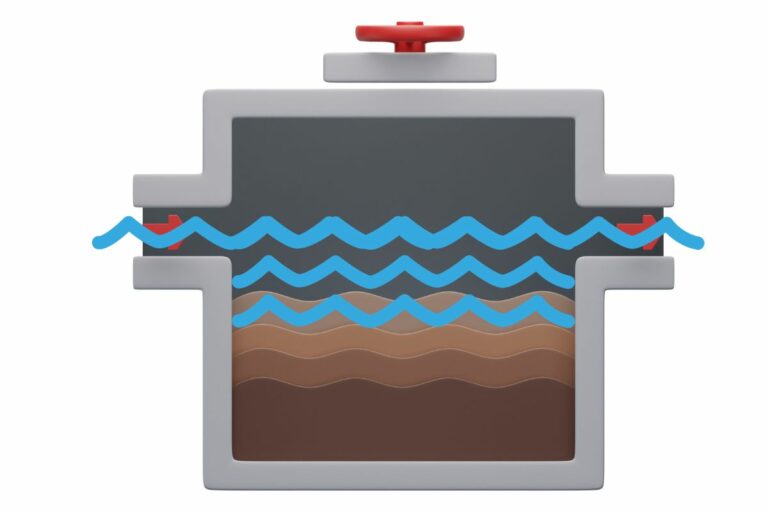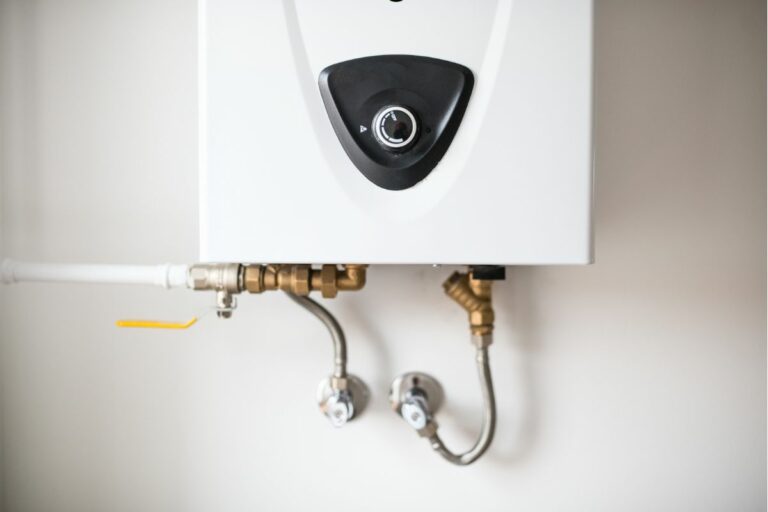Pump Causes Lights to Flicker? 7 Causes with Solutions
Are you experiencing flickering lights in your home or RV whenever your pump turns on? If so, then you’re not alone. Many homeowners have reported this issue, and it can be quite frustrating to deal with.
By understanding the potential causes of the issue and taking steps to troubleshoot and prevent it, you can ensure the safety and reliability of your home and its electrical system.
In this article, we’ll discuss what causes this problem, how to troubleshoot it, and what you can do to prevent it from happening again.
Pump Causes Lights to Flicker When Running

If your pump is causing your lights to flicker, it could be a sign that there’s an issue with the wiring or electrical system in your home or RV.
Sometimes, it may be a simple fix, but in others, you may need to call a professional electrician to diagnose and repair the problem.
What Causes Lights to Flicker When Pump is Running?
There are several potential causes of lights flickering when your pump is running, including:
- Faulty Capacitor
- Same Circuit Usage
- Overloaded Circuit
- Loose Wiring Connections
- Old or Damaged Wiring
- Faulty Circuit Breaker
- High Pump Starting Current
1. Faulty Capacitor
A single-phase motor requires a starting mechanism to get it up and running. One such mechanism is the starting capacitor, which is important in initiating the motor’s rotation.
However, if the starting capacitor becomes “damaged” or malfunctions, the motor may either fail to start or draw excessive current during the starting phase.
This causes lights to flicker because the motor draws a large amount of electrical current during the starting phase to initiate rotation.
If the starting capacitor is damaged, it may not store and release the required electrical charge efficiently, causing the motor to draw excessive current from the electrical system.
As a result, the voltage supplied to other devices connected to the same electrical system, such as lights, may drop temporarily.
2. Same Circuit Usage
When the pump and lights share the same circuit, it can create an even greater strain on power demands.
When the motor starts up, it draws a large peak load that can quickly cause a flicker in the lighting connected to that shared circuit.
Energy conservation requires proper load balancing between your various devices to avoid overloading any single circuit.
3. Overloaded Circuit
When the pump and lights share the same circuit, it can create an even greater strain on power demands.
When the motor starts up, it draws a large peak load that can quickly cause a flicker in the lighting connected to that shared circuit.
Energy conservation requires proper load balancing between your various devices to avoid overloading any single circuit.
To prevent flickering when a pump first comes on, make sure you have separate circuits for pumps and other heavy-duty equipment so each has its own dedicated power source without having to draw from one another.
With careful planning of how you distribute loads across multiple circuits, you’ll be well on your way toward maximizing efficiency and reducing unnecessary drains on electricity supply.
4. Loose Wiring Connections
Another potential cause of flickering lights is loose wiring connections.
If the wiring connections in your home are loose or damaged, this can cause voltage fluctuations and lead to flickering lights.
When a pump turns on, it can cause a sudden surge in power that can cause loose wiring connections to vibrate and create an electrical arc.
This arc can cause the lights to flicker. To fix this issue, the loose wiring should be secured securely and any frayed or damaged wires should be replaced.
5. Old or Damaged Wiring
Old or damaged wiring can also cause flickering lights. Over time, wiring can become corroded, damaged, or worn out, which can cause voltage fluctuations and lead to flickering lights.
Old or damaged wiring can cause lights to flicker when a pump comes on because the wiring is unable to handle the additional current that the pump draws.
Voltage drops in old or damaged wiring occur mainly because of the resistance produced as the additional current tries to pass within the same wiring to supply the pump, increasing the temperature within the wiring.
This causes a voltage drop in the circuit, which triggers the flicker as the voltage fluctuates.
6. Faulty Circuit Breaker
A faulty circuit breaker can also cause flickering lights. If the breaker is damaged or worn out, it may not be able to handle the power demands of your pump, leading to voltage fluctuations and flickering lights.
7. High Pump Starting Current
Starting a pump can cause the lights to flicker due to a surge in current.
When the motor starts, it draws much more power than its rated output, creating an overload on the circuit and causing a voltage drop.
Pumps that are overrated for their application are known for drawing higher currents than the electrical system can handle, resulting in voltage fluctuations when it starts.
How to Troubleshoot Lights Flickering When Pump is Running
If you’re experiencing flickering lights when your pump is running, there are a few steps you can take to troubleshoot the problem:
Check for Loose Wiring Connections
Start by checking the wiring connections in your home. Make sure all connections are tight and secure, and look for any signs of damage or wear.
Test Your Circuit Breaker
Next, test your circuit breaker to make sure it’s working properly. If the breaker is faulty or worn out, it may need to be replaced.
- Turn off the power supply to the circuit breaker.
- Disconnect the wires from the circuit breaker.
- Test the circuit breaker for continuity using a multimeter.
- Inspect the circuit breaker for any signs of corrosion or physical damage.
- Test the terminal connections of the circuit breaker for any loose connections.
- Test the circuit breaker trip current rating using an ammeter.
- Test the circuit breaker for proper voltage rating.
- Test the circuit breaker for the proper current rating.
- Test the circuit breaker for the proper time delay.
- Test the circuit breaker for proper response to circuit overloads.
Separate High-Power Appliances
If your pump is on the same circuit as other high-power appliances, try separating them onto different circuits.
This can help prevent overloading and reduce the likelihood of voltage fluctuations.
Upgrade Your Wiring
If your wiring is old or damaged, consider upgrading it to newer, more reliable wiring. This can help prevent voltage fluctuations and reduce the likelihood of flickering lights.
Preventing Lights from Flickering When Pump is Running
There are several steps you can take to prevent lights from flickering when your pump is running, including:
Install a Dedicated Circuit
Consider installing a dedicated circuit for your pump. This can help prevent overloading and reduce the likelihood of flickering lights.
Some pumps require a dedicated ground wire or GFCI protection so it is important that you check the manufacturer’s instructions for the said pump to ensure it is installed properly.
Upgrade Your Electrical System
If your home’s electrical system is outdated or not up to code, consider upgrading it to a newer, more reliable system.
Updating a house’s electrical system will help reduce the fluctuations in voltage when a pump starts by upgrading the wiring and circuit breakers to handle the increased demand.
If the circuit breakers are not adequately sized, they will trip when the pump is switched on, causing the voltage to fluctuate.
By installing larger circuit breakers or by rewiring the entire system, the electrical system can be upgraded to handle the increased load without causing voltage fluctuations.
Use a Voltage Stabilizer
Another option is to use a voltage stabilizer. A voltage stabilizer can help regulate the voltage in your home’s electrical system and prevent fluctuations that can cause flickering lights.
It does this by monitoring the voltage level and automatically adjusting it when the voltage fluctuates.
This prevents the voltage from becoming too high or too low, which can cause damage to electrical equipment. In addition, it helps to ensure that all electrical appliances in the home run at their most efficient levels.
Frequently Asked Questions
What Type Of Maintenance Should I Do On My Water Pump?
Maintaining your water pump is essential for keeping things running smoothly. To get the most out of it, you should give it a regular check-up every few months – think of it as giving your pump a ‘tune up’!
Check any valves or hoses for leakage, and make sure all power connections are secure and tight.
Additionally, inspect the motor itself to ensure that there are no loose wires or frayed cables, which could cause flickering lights when the pump comes on.
All in all, with just a little bit of effort, you can keep your water pump running like a well-oiled machine!
How Often Should I Check For Flickering Lights?
Fluctuating lights can indicate an issue with your water pump, so checking for flickering lights is important.
You should check regularly – at least once every few weeks – and if you notice any signs of the lights fluctuating, it is best to take action and inspect your water pump.
That way, you can avoid more serious issues from arising in the future.
Could There Be Any Other Sources Of The Flickering Lights?
Flickering lights can be caused by various sources, so it’s important to try and figure out the cause.
Common sources could include:
- Faulty wiring
- Overheating bulbs or fixtures
- Power surges
- Overloads on circuits
- Nearby equipment, such as air conditioners
It’s also possible that the flickering is due to an issue with your electrical panel.
Suppose you’re unable to identify the source yourself. In that case, it may be best to consult a professional electrician who can inspect your home and determine what might be causing the flickering lights.
Can I Fix This Problem Myself, Or Do I Need To Call A Professional?
Have you ever experienced flickering lights when your water pump comes on?
If so, you may be wondering if this is a DIY fix or something that requires the help of a professional.
While some electrical issues can be fixed easily with basic tools and knowledge, it’s always best to contact an electrician for safety reasons.
After all, messing around with electricity can be dangerous!
So, ask yourself – are you sure you know what needs to be done in order to safely resolve this issue?
What Kind Of Safety Precautions Should I Take When Dealing With This Issue?
When dealing with any electrical issue, it is important to take safety precautions in order to avoid injury.
To start, make sure you turn off the main power source before attempting any repairs or maintenance.
Wear insulated gloves and goggles when working around electricity and keep all tools away from live wires.
Additionally, never touch a wire that could be carrying current – always use an insulated tool instead.
It’s also best to call a professional if you are uncomfortable handling the situation alone.
The Takeaway
If your pump is causing your lights to flicker, it’s essential to address the problem as soon as possible. Flickering lights can signal a serious electrical issue; in some cases, it can even be a fire hazard.
By troubleshooting the problem and taking steps to prevent it from happening again, you can ensure the safety and reliability of your home’s electrical system.
Remember to check for loose wiring connections, test your circuit breaker, separate high-power appliances, upgrade your wiring, install a dedicated circuit, use a voltage stabilizer, replace old appliances, and schedule regular electrical maintenance to prevent lights from flickering when your pump is running.






